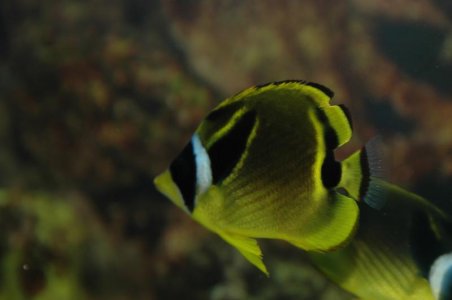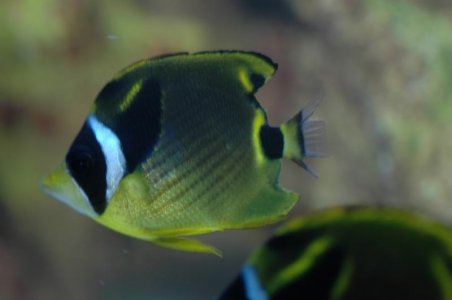Rondelet
New member
Having observed this pair of butterflies closely for a couple of weeks now, I'm pretty certain they are dealing with bacterial infection. The left fish (file-"œRaccoon-01") is lagging behind the second fish as there is only a small notch on the posterior of the dorsal fin. This shot essentially show the very start of the infection. The right fish (file-"œRaccoon-02") shows a more advance progression with much of the posterior portion of the dorsal and anal fin missing, along with some splitting of the caudal fin. The fins on the second fish have been slowly deteriorating for a few weeks now. What is particularly interesting is that there are no other signs of disease. The margins of the fins at the site of infection show little to no signs of inflammatory response. Fish are swimming around normal, eating very well, and show no other signs indicating septicemia (although this could change!). My apologies for the image quality. I was trying to get a close-up of the fin margin with a macro, but my lens is not great (quite slow) and the fish are very active.
I've tested the water and get no readings for ammonia. I have been cleaning the tank to remove detritus and changing the water (10 % weekly). The bioload is very minimal with only a few other fish: a midnight angel and royal gramma, both showing similar signs of the same type of fin damage but also doing well otherwise; there is also a sailfin tang, goby and flame angel all showing no signs of disease. The system is 120gal with a 20 gal sump.
It would be next to impossible to remove the fish without taking all the live rock out. Given that the system is a simple FOWRL, I'm preparing to treat the system with erythromycin and tracking the results. I'm curious to know if anyone else has observed a similar pathology in their fish: fin rot without obvious signs of inflammation and no other signs of disease. Any comments or observations are welcome.
I've tested the water and get no readings for ammonia. I have been cleaning the tank to remove detritus and changing the water (10 % weekly). The bioload is very minimal with only a few other fish: a midnight angel and royal gramma, both showing similar signs of the same type of fin damage but also doing well otherwise; there is also a sailfin tang, goby and flame angel all showing no signs of disease. The system is 120gal with a 20 gal sump.
It would be next to impossible to remove the fish without taking all the live rock out. Given that the system is a simple FOWRL, I'm preparing to treat the system with erythromycin and tracking the results. I'm curious to know if anyone else has observed a similar pathology in their fish: fin rot without obvious signs of inflammation and no other signs of disease. Any comments or observations are welcome.


